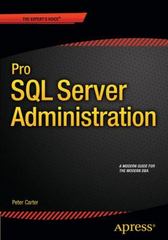Question
Part A: Given the following 25. void doSomething() { 26. X x = doStuff(new X() ); 27. X y = doStuff(x); 28 x = null;
Part A:
Given the following
25. void doSomething() {
26. X x = doStuff(new X() );
27. X y = doStuff(x);
28 x = null;
29. y = null;
30. }
31. X doStuff(X x){
32 return doStuff2(x);
33. }
After which line of cade is the object created on line 26 eligible for garbage collection?
a. After line 28
b. After line 29
c. After line 30
d. The object will not become eligible
e. It is not possible to know from this code.
Part B;
Which one statement below is true concerning the following code?
1. class Greebo extends java.util.Vector
2. implements Runnable {
3. public void run(String message) {
4. System.out.println("in run() method: " +
5. message);
6. }
7. }
8.
9. class GreeboTest {
10. public static void main(String args[]) {
12. Greebo g = new Greebo();
13. Thread t = new Thread(g);
14. t.start();
15. }
16. }
A) There will be a compiler error, because class Greebo does not correctly implement the Runnable interface.
B) There will be a compiler error at line 13, because you cannot pass a parameter to the constructor of a Thread.
C) The code will compile correctly but will crash with an exception at line 13.
D) The code will compile correctly but will crash with an exception at line 14.
E) The code will compile correctly and will execute without throwing any exceptions.
Part C:
Which Man class properly represents the relationship Man has a best friend who is a Dog?
A. class Man extends Dog { }
B. class Man implements Dog { }
C. class Man { private BestFriend dog; }
D. class Man { private Dog bestFriend; }
E. class Man { private Dog
F. class Man { private BestFriend
Part D:
Given:
10. public class Bar {
11.static void foo(int...x) {
12. // insert code here
13. }
14. }
Which two code fragments, inserted independently at line 12, will allow the class to compile? (Choose two.)
A. foreach(x) System.out.println(z);
B. for(int z : x) System.out.println(z);
C. while( x.hasNext()) System.out.println( x.next());
D. for( int i=0; i< x.length; i++ ) System.out.println(x[i]);
Part E:
Given:
11. public class Test {
12. public static void main(String [] args) {
13. int x =5;
14. boolean b1 = true;
15. boolean b2 = false;
16.
17.if((x==4) && !b2)
18. System.out.print(l );
19. System.out.print(2 );
20. if ((b2 = true) && b1)
21. System.out.print(3 );
22. }
23. }
What is the result?
A. 2
B. 3
C. 1 2
D. 2 3
E. 1 2 3
F. Compilation fails.
G. An exceptional is thrown at runtime.
Step by Step Solution
There are 3 Steps involved in it
Step: 1

Get Instant Access to Expert-Tailored Solutions
See step-by-step solutions with expert insights and AI powered tools for academic success
Step: 2

Step: 3

Ace Your Homework with AI
Get the answers you need in no time with our AI-driven, step-by-step assistance
Get Started


